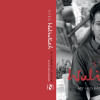A writer's writer: Akhtaruzzaman Elias

Seven or eight years ago, I went to a program dedicated to the memory of Akhtaruzzaman Elias, one of our finest writers. It was a neatly arranged program in which many aspects of Elias's life and works were discussed. Most of the presentations were informative, and only a few mundane, but the reason why I remember this program so vividly is because of a comment that was so grotesquely off limit that I almost choked in disbelief when I heard it. That day, a renowned professor who is an expert on French psychoanalytical theorist Jacques Lacan got on stage to claim that Elias is too difficult to read. My immediate reaction was a chuckle: no Lacanian, I feel, should complain about any author's stylistic difficulty, least of all about Elias's prose, which is rich and complex but dynamic as well. Elias has been labeled as difficult by many, and, sometimes, for appropriate reasons. But can stylistic difficulty be used as a normative category for measuring literary value?
Many of the world's greatest writers were not the best of entertainers. Accessibility certainly makes some literary works popular, but when people read Manik Bandopadhyay, Syed Waliullah, Kamal Kumar Majumdar and/or Hegel, Marx, Freud, Joyce, Faulkner, and Fanon, do they read these writers for their crystal clear prose? Writing is organically related to the theme one is communicating and can vary in a number of discernible/indiscernible ways. Peasants, workers, vagabonds, and professors - many such have read Marx's most difficult work - Capital. The difficulty of this voluminous work's philosophical premises and, at times, long and opaque sentences did not deter such readers; rather, people of all spectrums of life read this book and found it both useful and inspiring. The October Revolution of 1917 owes a lot to the Russian translation of Marx's Capital. Before casually labeling something as "difficult", we need to carefully consider why certain people find certain things difficult. Black Panther members found Fanon difficult, but, that did not stop them from reading Black Skin, White Masks. Joyce, Faulkner, and Fanon appear difficult to a large number of my students, and a class even complained to me about Edward Said's prose, but does it mean that any of these writers become any less relevant because my students think of them as difficult?
When it comes to Elias, I feel, we have to pay less attention to this discussion about difficulty, and focus more on both his innovative language and radical thematic content. His style and content both grew organically out of the soil of the world he built in his works. Dominican-American writer Junot Diaz once mentioned in a lecture that great writers build unique worlds in their writings. Anyone who has read Garcia Marquez knows how unique a world he has created in One Hundred Years of Solitude! Florentino Ariza, the passionate and almost miserable protagonist of Love in the Time of Cholera, makes sense only in the world in which unrequited love is ultimately answered for. Bizarre and fantastic though they may appear, these fictional worlds are as familiar as our own, so much so that the world inhabited by the Buendias and Florentino Ariza merge with our own, and become a part of our lives. When one speaks of fictional worlds, one must also note how magnificently James Joyce and William Faulkner have built unique worlds in their major works. Elias's power as a writer, among other things, lies in his capacity to create unique fictional universes full of remarkable characters that subsequently become parts of our existence. It is difficult to forget Haddi Khijir, one of the central characters of Elias's first novel Chilekothar Shepai, who loses his life when the Pakistani army opens fire on a procession demanding Ayub Khan's resignation. A character like Haddi Khijir is rare in Bengali literature; he is a subaltern who not only speaks but also resists. Very few commentators on Elias's works have noted that Chilekothar Shepai predates the theoretical and/or historical works of the Subaltern Studies Group by almost a decade. Although fictions and historiography cannot be brought under the same roof without mediation, it is possible to make such claims about Elias's work because both of his novels are deeply historical. As Anu Muhammad has noted somewhere, history is the true protagonist of Elias's fictions.
If one pays attention to Elias's two novels, one would perhaps understand how intricate this world-building process is. The two worlds of Chilekothar Shepai and Khoabnama seem similar because they both are created around mass uprisings. Chilekothar Shepai, Elias's first novel, is set at the backdrop of 'Unoshotturer Gono-abhyuththan,' while Khoabnama, his last novel, is located at the juncture between 'Tevaga Andolon' and the anticolonial national liberation movement. Chilekothar Shepai uses the vernacular inflections of Old Dhaka, and of rural north Bengal brilliantly to bring its story to life. Khoabnama's narrative, on the other hand, emulates the mystical existence of the quasi-mythical people who exist in the oral history of subalterns - boatmen, landless farmers, and nomadic folk singers. The extensive use of Puthi shlokas in Khoabnama conveys through innuendoes the material struggles of people who communicate their collective experiences through an organically grounded mysticism in which the material life mirrors itself in an alienated form.
Truly, there is no closure in Elias's novels. Time moves in circle in them and the dead find an afterlife in the body and the consciousness of the living. Haddi Khijir, after his death, follows Osman to his freedom from alienation while Fuljan's daughter takes it on herself to continue her father's struggle. Since revolution is the aspired backdrop of Elias's novels, his novels do not force a closure on the narrative. The continuity of struggle gestures towards the continuity of oppression and people's resistance against such oppression.
The more I read Elias, the more conscious I become of his importance in world literature. Elias spearheaded a group of immensely powerful Bangladeshi writers who began writing in the 1960s. Mahasweta Devi considered Elias the finest novelist to have emerged out of Bangladesh. Hasan Azizul Huq has placed Elias in the milieu of great writers like Garcia Marquez, Carlos Fuentes, Chinua Achebe, Naguib Mahfouz, and Salman Rushdie. Elias was a writer's writer and the great Bengali writers of his time knew where exactly to place him. It barely matters when a few ungenerous critics fail to do the same!
Hasan Al-Zayed teaches at the University of Liberal Arts, Bangladesh while trying to complete his doctoral dissertation from SUNY, Buffalo.

 For all latest news, follow The Daily Star's Google News channel.
For all latest news, follow The Daily Star's Google News channel. 









Comments